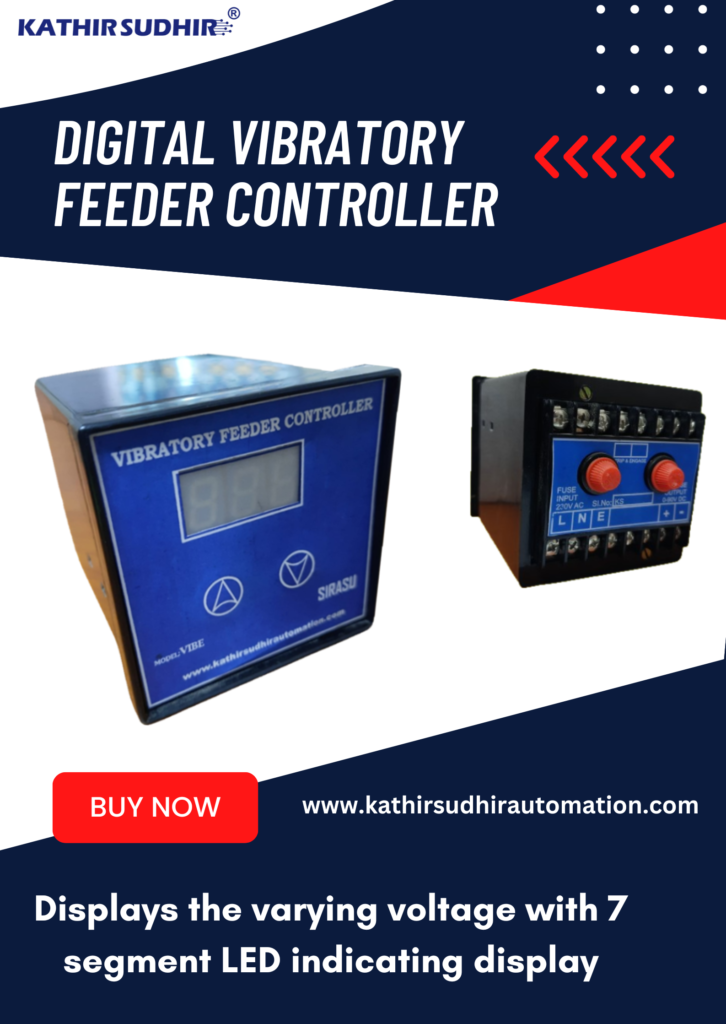Introduction: In the realm of manufacturing and industrial automation, precision and efficiency are paramount. One technology that plays a crucial role in achieving these objectives is the Digital Vibratory Feeder Controller. This remarkable device has revolutionized the way materials are handled and processed in various industries, from pharmaceuticals to food production and beyond. In this blog, we’ll explore the world of Digital Vibratory Feeder Controllers, their benefits, and how they are transforming industrial processes.
Understanding Vibratory Feeders
Before delving into the details of Digital Vibratory Feeder Controllers, it’s essential to grasp the concept of vibratory feeders themselves. Vibratory feeders are ingenious devices designed to convey bulk materials smoothly and consistently. They use vibrations to move materials in a controlled and precise manner, making them indispensable in manufacturing processes where accurate material handling is critical.

Traditional vs. Digital Control
Traditionally, vibratory feeders were controlled using analog methods. These methods, while effective to a certain extent, lacked the precision and flexibility that modern manufacturing demands. Enter Digital Vibratory Feeder Controllers – a game-changer in the world of material handling.
Benefits of Digital Vibratory Feeder Controllers
- Precision Control: Digital controllers provide unparalleled precision in regulating the amplitude and frequency of vibrations. This precision ensures that materials are fed at a consistent rate, reducing waste and ensuring product quality.
- Flexibility: Digital controllers allow for easy adjustment of feeding parameters, making it possible to switch between different materials and feed rates with minimal downtime. This adaptability is a significant advantage in industries that handle a variety of materials.
- Remote Monitoring and Control: Many Digital Vibratory Feeder Controllers come equipped with remote monitoring and control capabilities. This feature allows operators to make real-time adjustments and troubleshoot issues remotely, reducing the need for on-site personnel.
- Enhanced Safety: Digital controllers often include safety features like overload protection and fault detection. These features help prevent equipment damage and ensure the safety of workers.
- Data Logging and Analysis: Digital controllers can log operational data, providing valuable insights into the performance of the feeder. This data can be analyzed to optimize processes further and predict maintenance needs.
- Energy Efficiency: Digital controllers are designed to be energy-efficient, reducing power consumption and operating costs.
Applications
Digital Vibratory Feeder Controllers find applications across a wide range of industries, including:
- Pharmaceuticals: Precise feeding of ingredients in pharmaceutical manufacturing ensures product consistency and compliance with stringent quality standards.
- Food Processing: From packaging to sorting and filling, digital controllers are used to handle various food products efficiently and hygienically.
- Automotive: In automotive assembly lines, these controllers facilitate the precise delivery of components, contributing to the assembly of high-quality vehicles.
- Packaging: Digital vibratory feeders are crucial in the packaging industry, where precise product placement and consistent filling are essential.
- Electronics: These controllers are used to handle delicate electronic components without causing damage.
Conclusion
Digital Vibratory Feeder Controllers have ushered in a new era of efficiency and precision in material handling. Their ability to provide precise control, flexibility, remote monitoring, and data analysis capabilities makes them indispensable in today’s manufacturing landscape. As industries continue to evolve and demand higher standards of quality and efficiency, these controllers will play an increasingly vital role in ensuring the success of manufacturing processes. Embracing this technology is not just a matter of convenience; it’s a strategic move towards staying competitive in the modern industrial landscape.
